Denise Herzing, Ph.D., founder and director of the Wild Dolphin Project, has been studying Atlantic spotted dolphins (Stenella frontalis) in the Bahamas since 1985. Since that time, she’s learned a lot about their social behavior, communication, feeding behavior, ecology, and social structure.
Dolphins are mammals, which means they breathe air and nurse their young. They are found all over the world, but the spotted dolphins live in the warm temperate and tropical waters of the Atlantic Ocean.
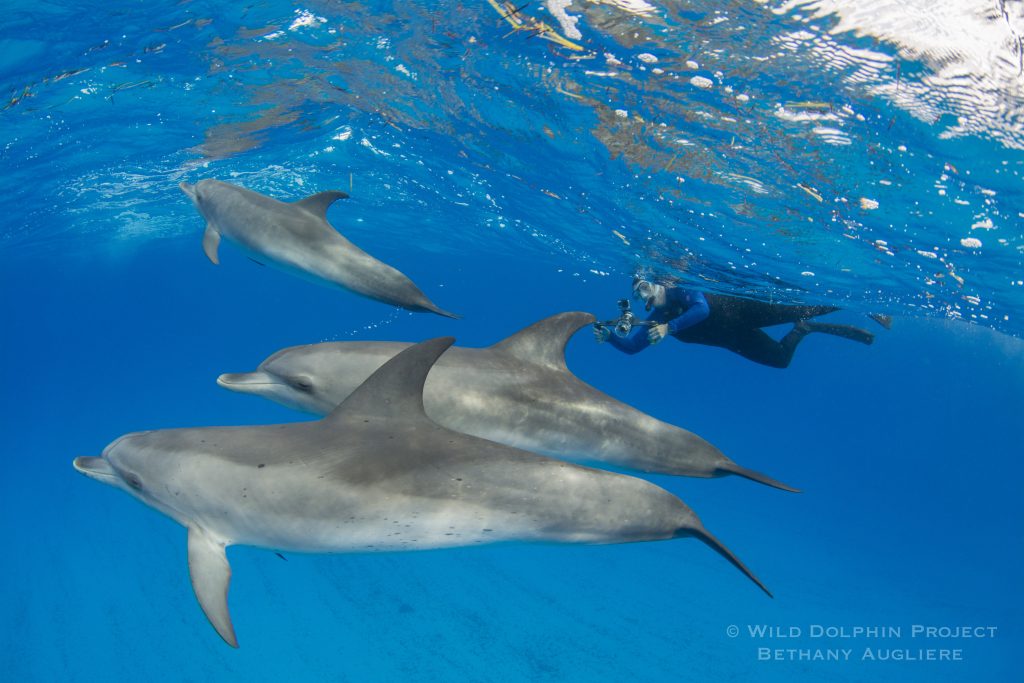
Denise Herzing working with spotted dolphins in the Bahamas. Photo Bethany Augliere.
1. Best Friends
Spotted dolphin males form a best friend for life. They help defend each other during aggressive encounters and also secure mating opportunities with females. They are almost always seen together. Romeo and BigGash were a famous older duo in the population that we studied for decades before they likely passed.
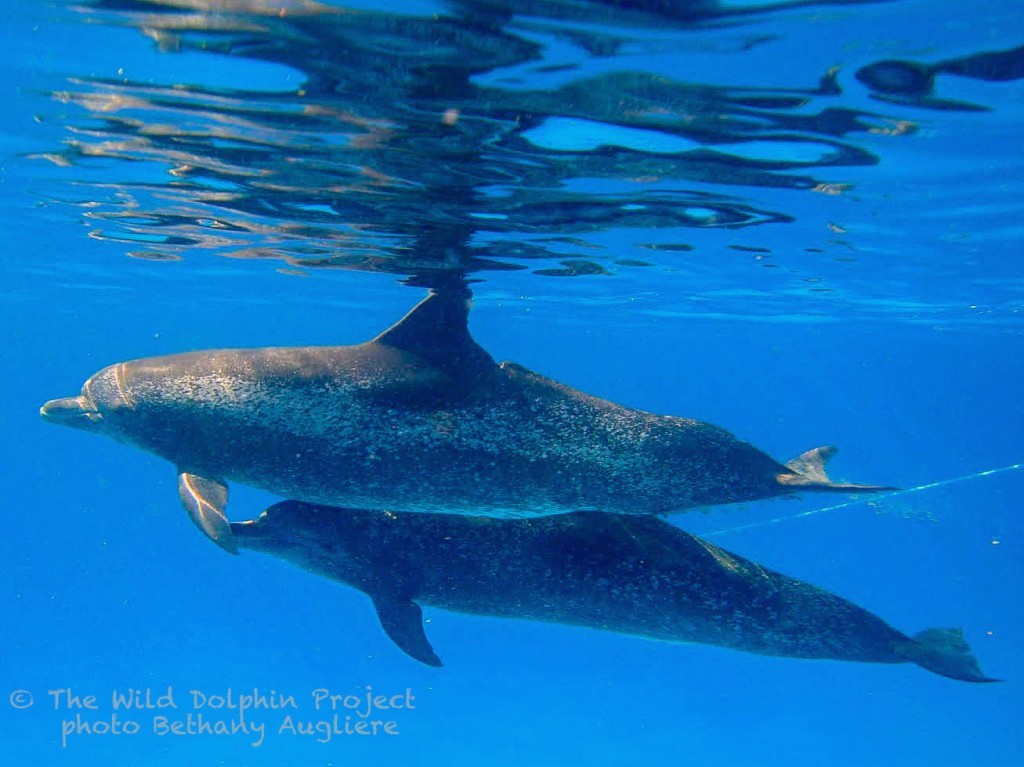
Romeo and BigGash swim together in the Bahamas. Photo Bethany Augliere.
2. Strength in Numbers
In the Bahamas, bottlenose dolphins and spotted dolphins will fight each other during aggressive encounters. The spotted dolphins are smaller and our research has shown that it takes about 6 spotteds to fend off one bottlenose. During these encounters, becoming synchronized in their behavior helps them succeed.
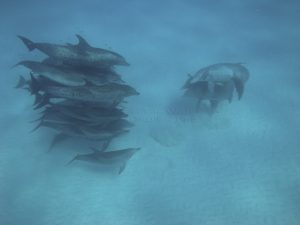
Synchronized spotted dolphins group up to face
3. Late Night Feeding
Spotted dolphins live on the shallow sandbanks. But during the night, they leave the bank and head off into deep water to feed on squid and flying fish at night.
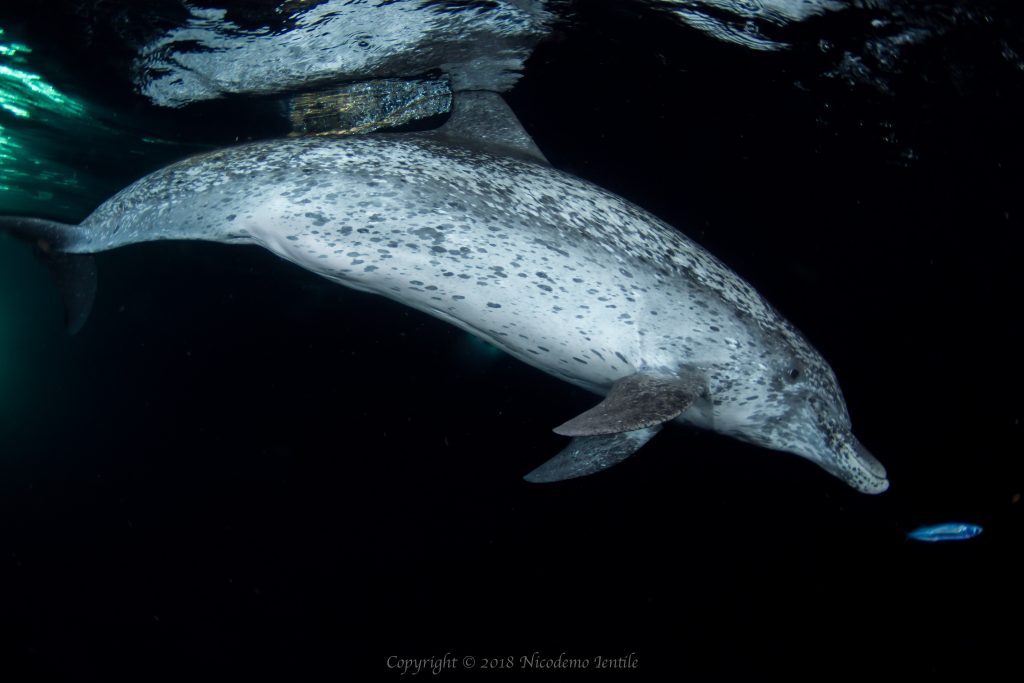
Zion hunts to catch a flying fish at night. Photo Nico Ientile.
4. Game Time
Spotted dolphins are naturally very playful and curious. They will often engage in games of seaweed keep away with each other, and even us humans if we follow proper etiquette (we don’t ever grab the seaweed away from the dolphins, but rather, wait for them to drop it in front of us). We’ve seen calves playing with things in their environment, like sea cucumbers, filefish — even plastic.
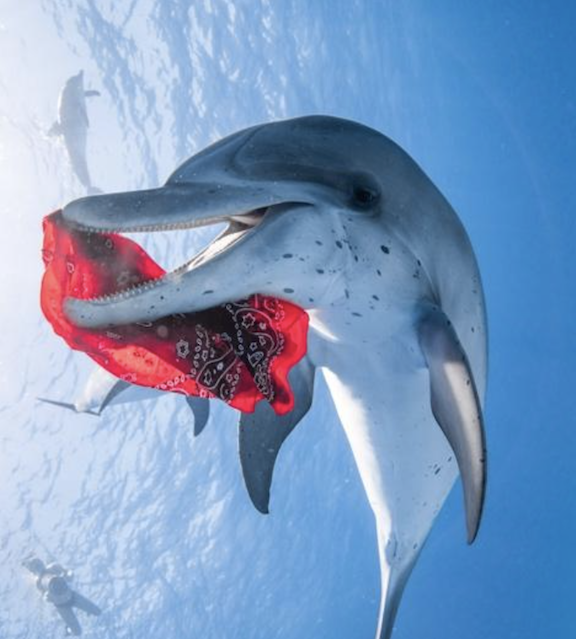
Copyright Wild Dolphin Project.
5. Seeing Spots
They gain spots with age. Calves are born all grey, then they start to get small black spots, then white, and eventually the spots fuse to resemble more of an overall color pattern. In general, the degree of spotting correlates with age, which means we can estimate the age of any new individuals in the population.
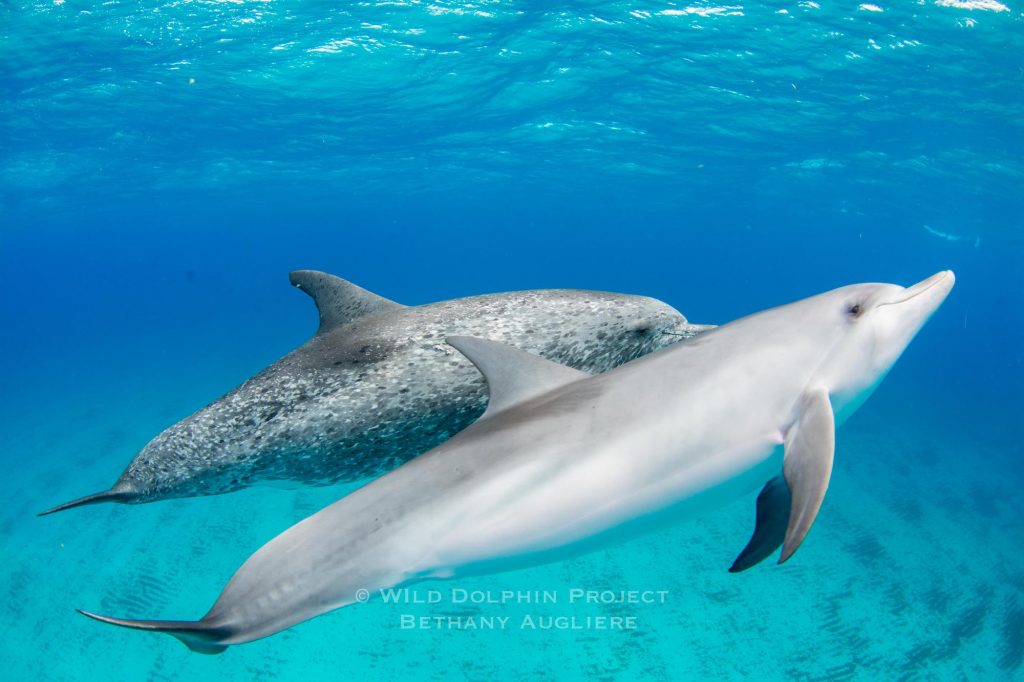
Mama dolphin with her new spotless calf.
6. Mass Exodus
In 2013, 50% of the population that had lived off Grand Bahama Island on Little Bahama Bank (LBB) for decades moved in an unprecedented event to an island 100 miles south with an existing resident population of spotted dolphins. We hypothesized the move is related to a crash in the food web, due to changing environmental conditions. We now study both populations, and have gained new insight into how the two groups are assimilating. Interestingly, a few dolphins from LBB have since moved down years after the initial exodus event, and a few who had moved down went back!
If you want to be a marine biologist or scientist, don’t let anyone tell you there’s nothing left to discover. There’s still so much to explore and learn, especially as climate change conditions to impact ocean and coastal environments.
Read more:
What is dolphin synchrony and why does it matter.
Spotted dolphin night feeding in the Bahamas
Sargassum seaweed, a favorite dolphin toy
Spotted dolphin age class, color phase and life history
Sometimes fish are toys, not food
